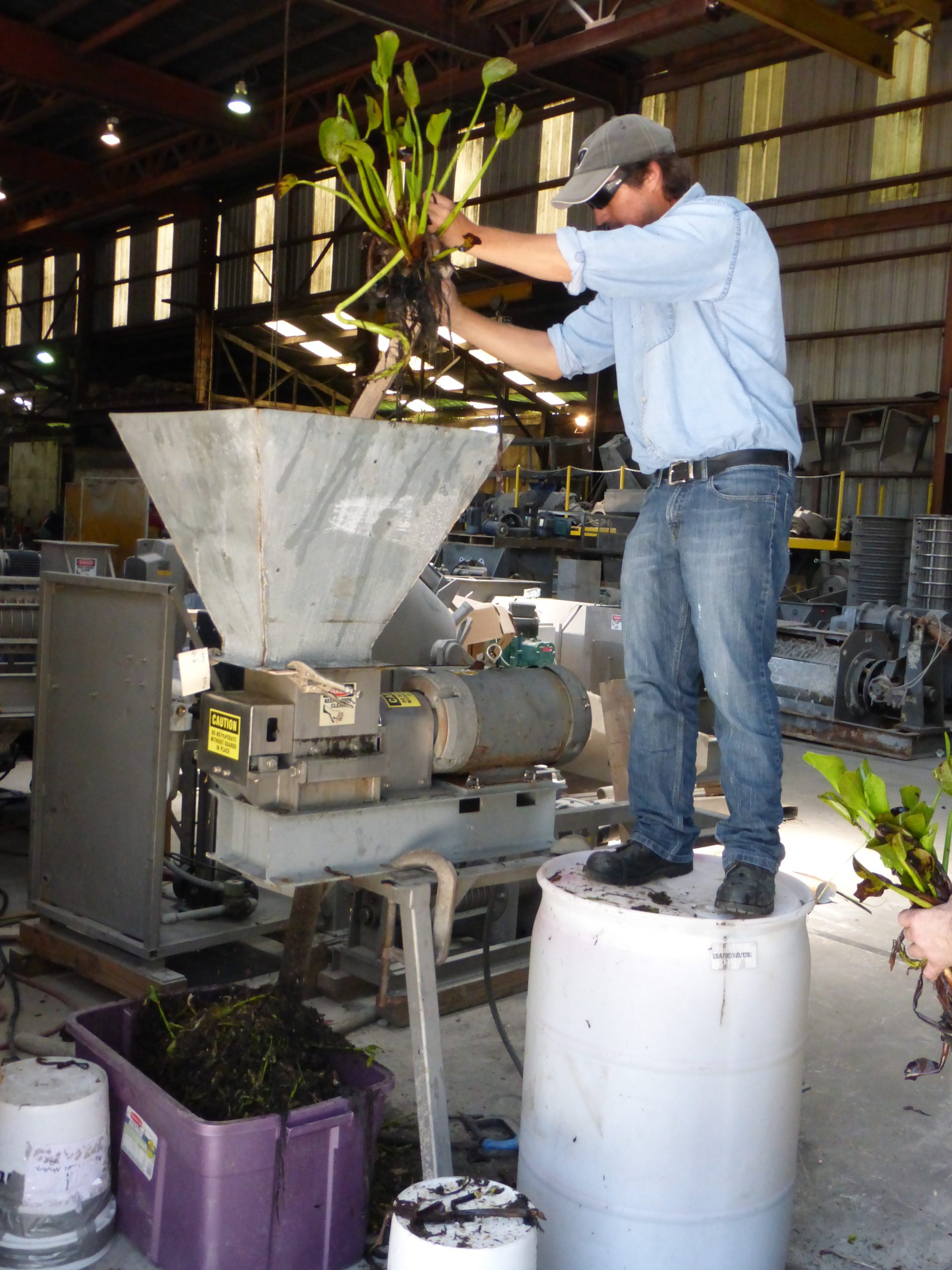August 21, 2020
In recent months there has been interest in disposal of seaweed such as sargassum and kelp, and fresh water algae like water hyacinths and hydrilla. We have been successful in pressing this waste in our screw presses.
By and large, satisfactory results are achieved without shredding ahead of the press. Some customers, however, do find that shredding is worthwhile for increasing water separation and reducing the weight and volume of the resulting pressed fiber.
One customer is using the Vincent Fiber Filter to separate fines from the press liquor (water). The sludge which is separated can be re-admitted to the flow going into the screw press.
Sargassum seaweed has become a serious problem in fouling beaches throughout Mexico and the Caribbean islands. The seaweed washes up on the beaches. It spoils there, and becomes a very odorous nuisance.
Water hyacinths and hydrilla have been fouling the inland waterways of Florida for decades. In the 1970’s one Vincent engineer worked on an FMC project to modify a potato harvester for uprooting water hyacinths in efforts to clear lakes and streams. The machine used had previously been modified for loading oranges which had been mechanically harvested. It was mounted on a pontoon boat.
As collected, these seaweeds and algae all have very high moisture contents. The chart below lists the results of our somewhat random trials:
MOISTURE CONTENT
| AS-RECEIVED | PRESS CAKE | |
| Kelp | 88-89% | 86-88% |
| Sargassum | 78-84% | 71-74% |
| Hyacinths | 93-94% | 68-78% |
| Hydrilla | 91% | 69% |
The dissolved solids in the press liquor are very low, with readings of 0 to 0.5 Brix being typical. This tells us that the water is not suitable as feedstock for a biogas digester, but it can be freely returned to the body of water where it came from.
So far no one seems to have found a use for the press cake which pencils out. Work is being done to make it into a biofuel. However most of the press cake is landfilled.
Washing algae with alcohol always results in a dramatic reduction of the moisture left in the press cake. Press cakes with moisture contents around 50% are easy to obtain. However the capital investment runs high because of the cost of vapor-tight machinery and the cost of recovering the alcohol in evaporators and condensers.
There are several videos on Vincent’s YouTube channel showing tests which have been conducted in Tampa:
2.6 minutes, 2020: HYDRILLA & HYACINTHS
https://youtu.be/PipCLuzDa_4
4.7 minutes, 2000: WATER HYACINTHS (Cake moisture of 57% to 68% was achieved)
https://youtu.be/nddXzStzfYY
8 minutes, 2020: KELP SEAWEED
https://youtu.be/hpdmXGc5OfY
10 minutes, 2020: KELP SEAWEED JUICE
https://youtu.be/ShSKhGyM-P8
Related issues of Pressing News:
#7 October 1973, WATER HYACINTHS (Reducing BOD in a WWTP)
#78 June 1998, SEAWEED (Describes our initial failure)
#220 March 2010, DUCKWEED (Protein recovery)
#225 April 2010, ALGAE (Oil recovery)
#228 December 2010, SEAWEED PRESSING (Current developments)
#283 August 2016, ALGINATE (Hydrocolloid production)

ISSUE #327
